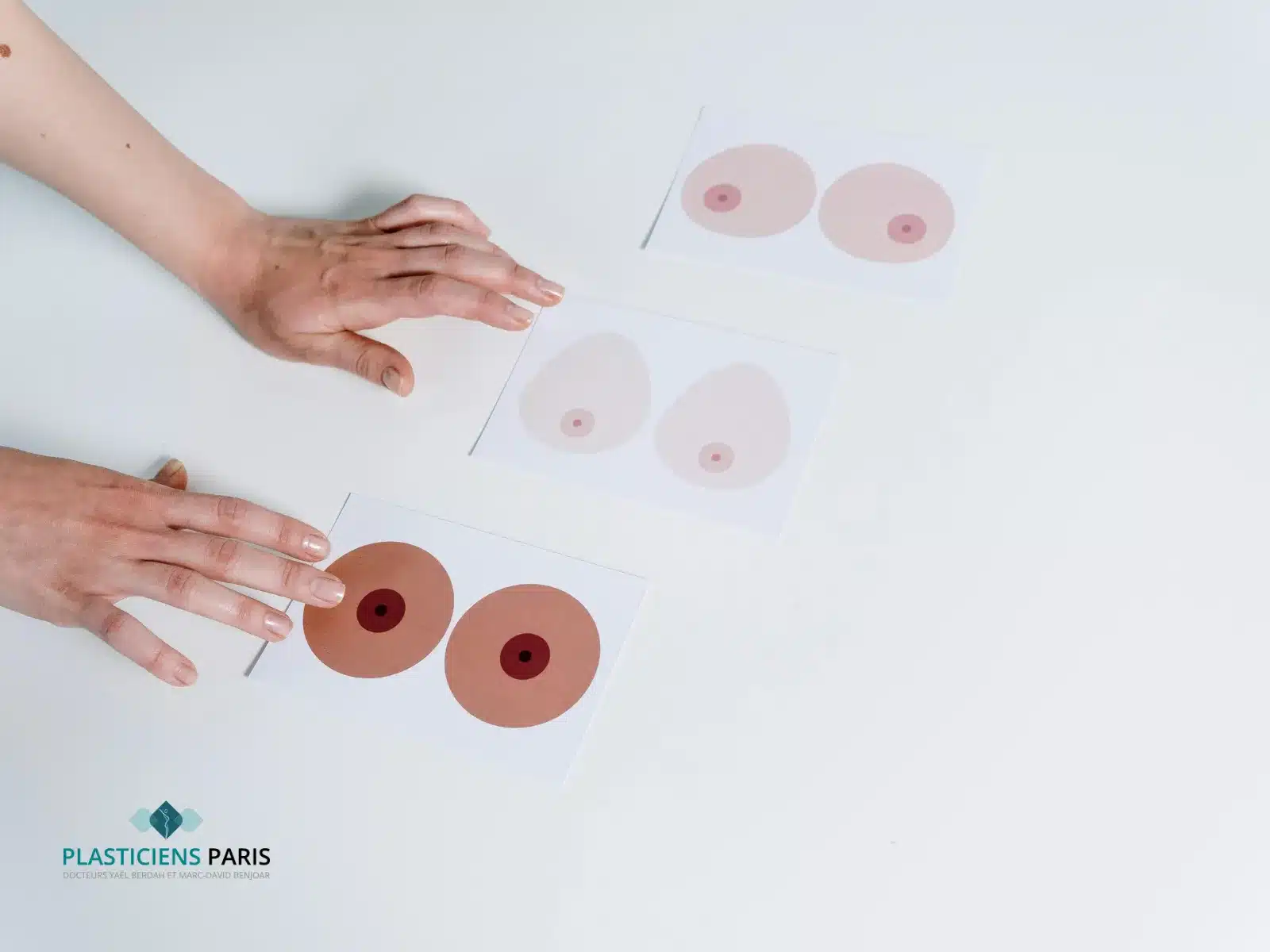
The umbilicated nipple, also known as the invaginated nipple, is a frequent anomaly that can be a source of physical and psychological discomfort. The condition is often benign, but can make breastfeeding difficult or interfere with daily life. Umbilical nipple surgery offers an effective solution to the cosmetic nature of this condition. On the other hand, it can compromise any chance of future breastfeeding. The procedure is covered by the French Assurance Maladie. Here are the key points to bear in mind.
Qu’est-ce qu’un Mamelon ombiliqué ? (définition d’un mamelon invaginé)
Le mamelon ombiliqué, ou invaginé, désigne un mamelon qui se rétracte à l’intérieur du sein plutôt que de pointer naturellement vers l’extérieur. Considérée comme une malformation du sein, cette anomalie est souvent présente dès la naissance, mais elle peut se développer progressivement au fil du temps. Il existe plusieurs stades d’invagination, qui varient selon l’intensité de la rétraction.
In the early stages, the nipple may be slightly retracted, but this remains discreet and causes little discomfort. At a more advanced stage, the nipple may be more deeply retracted, which can create tension and difficulties during certain daily gestures. In the most severe forms, the nipple is completely buried in the areola, making its appearance and shape particularly altered.
This phenomenon can affect one or both nipples, and its impact varies from one person to another, ranging from a simple aesthetic inconvenience to a more marked difficulty in everyday life.
Quelles sont les causes du mamelon ombiliqué
The main cause of umbilicated nipples is abnormal development of the milk ducts. It can also result from hormonal imbalance, particularly during puberty or pregnancy. Certain infections, traumas or physiological changes can also favour the appearance of this anomaly. In some cases, genetic factors are at the root of the condition.
Quelle opération pour un mamelon invaginé ?
Umbilical nipple surgery aims to straighten the nipple by freeing the milk ducts and reconstructing its shape. Performed under local or general anaesthetic, the operation involves making small incisions around the areola to allow the nipple to reposition itself correctly. We then perform a peripheral bursa suture to prevent the nipple from retracting again. The surgical procedure is relatively straightforward and can be performed on an outpatient basis, meaning that the patient can go home the same day. The aim of this surgery is essentially aesthetic. It restores the shape of the nipple, thus eliminating the complex associated with invagination.
Quel est le prix d’une Chirurgie de mamelon ombiliqué ?
The cost of umbilical nipple surgery can vary according to the complexity of the procedure, the technique, the care facility and the surgeon. A cure for an invaginated nipple costs around 1,500 euros. A detailed estimate is drawn up and given to the patient during the preliminary consultation to help her prepare for the procedure. The final price will include anesthesia and hospitalization costs.

Remboursement d’une chirurgie mamelon ombiliqué : une prise en charge possible ?
La chirurgie pour corriger un mamelon invaginé peut être prise en charge par la Sécurité Sociale en règle générale. La consultation avec le chirurgien suffit pour valider l’indication, normalement sans entente préalable. De plus, certaines mutuelles peuvent également rembourser tout ou partie des frais restants associés à cette intervention, selon les garanties spécifiées dans le contrat. Il est donc recommandé de se renseigner auprès de son assureur pour obtenir des informations plus précises.
Umbilical nipple surgery: what are the side effects?
Comme pour toute intervention chirurgicale, l’opération du mamelon ombiliqué comporte certains risques.. Dans de rares cas, des troubles de la sensation au niveau du mamelon peuvent survenir, ainsi qu’une nécrose du mamelon. Malheureusement, l’ombilication du mamelon peut récidiver dans 5 à 20 % des cas selon les techniques opératoires. Dans notre série de chirurgie mini-invasive avec bourse nous n’avons pas eu de récidive à ce jour. Une surveillance postopératoire attentive permet de prévenir ces complications. Le chirurgien donnera des instructions précises pour prendre soin de la zone opérée et limiter les risques de complications.
Umbilical nipple surgery: postoperative care
Post-operative care is usually straightforward. Patients may experience slight pain or discomfort in the days following the procedure. Analgesics may be prescribed to relieve pain. It is important to keep the operated area clean and to avoid excessive pressure on the chest for the first few weeks.
Scars are discreet and fade over time. It is advisable to limit strenuous physical activity during the convalescence period to promote proper healing. The results of the operation may be visible within the first few weeks, but complete healing generally takes between three and six months.
Mamelon ombiliqué et allaitement : est-ce toujours possible après la chirurgie ?
After umbilical nipple surgery, breastfeeding is often affected, as the operation often involves cutting the galactophore ducts, essential for milk circulation. This operation often results in the loss of the ability to breastfeed, making breastfeeding impossible.
Patients wishing to breastfeed at a later date should discuss this with their surgeon before surgery to assess the merits of surgery and find alternatives, such as mechanical support with traction effect, where possible.
This procedure improves the aesthetic appearance of the nipple, but it's important to take into account the possibility of impaired breast-feeding capacity before deciding on the operation.




